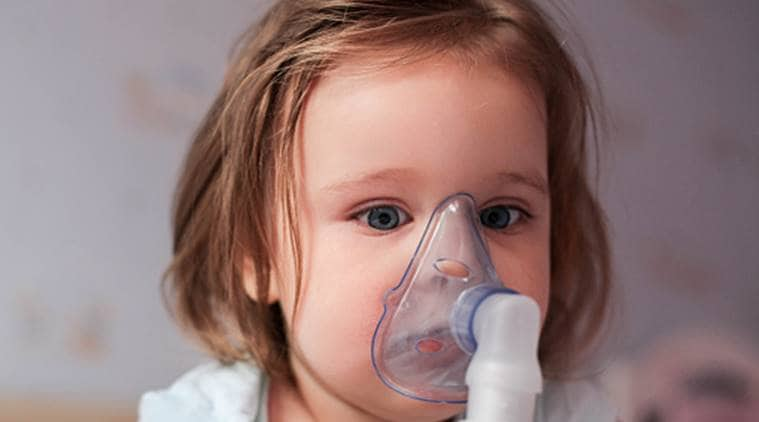
Children can be protected against vaccine preventable diseases, if vaccinated in time adequately. But younger children have a low threshold to deteriorate, compared to older children.

Dr Jesal Sheth & Dr Sameer Sadawarte
The respiratory system in the human body starts from nose, pharynx (throat), wind pipe opening (glottis), wind pipe (trachea, bronchus) and it branches (bronchioles) to the lungs, full of alveoli, which are grape-shaped. Disease of any part of the respiratory system due to swelling, or obstruction or compression or aspiration is going to give you respiratory distress. Few other medical problems of the heart, brain or even fever can also trigger respiratory distress.
How will you come to know?
When you see a child breathing faster, if breathing is deeper with or without retractions in the chest, in rib cage or in upper abdomen or neck, with or without different kind of audible breath sounds associated with fatigue and sweating, should be considered as an alarming sign to approach the closest casualty and find immediate treatment.
Why does this happen?
Our body cells need oxygen to stay alive and to remove carbon dioxide from the blood by breathing. This normally happens with use of diaphragm unconsciously throughout the day in a normal healthy child. But due to any medical diseases, if enough oxygen does not reach to the cells, due to increased utilisation or decreased supply, or if lungs are not able to remove carbon dioxide, it leads to change in blood pH level. Using all back up accessory muscles as auto compensatory mechanisms, our body tries to meet the increased demand or decreased supply to prevent tissue death. This reflects through rapid breathing, deep rasping, with retractions, nasal flaring and audible noisy breath sounds sometimes. Untreated severe respiratory distress can lead to cardiac arrest if not treated in time.
What are the common medical problems leading to respiratory distress?
Respiratory distress can happen due to various medical conditions like pneumonia, pleural effusion, lung malignancies, acute exacerbation of asthma, bronchitis, lung abscess, presence of foreign bodies in the respiratory system, severe laryngitis, peritonsillar abscess, etc.
What can be done?
An obvious next step upon experiencing or witnessing respiratory distress is rushing the child to the nearest Emergency Room. The treatment is to supplement oxygen, to reduce work of breathing, followed by investigations to find the cause of respiratory distress by X-ray, blood tests and USG. Treatment depends on cause. Many of the patients with respiratory distress not only require hospitalisation, but also monitoring in pediatric ICU, and sometimes even Ventilator Care, if the disease evolves rapidly and severely.
Also Read| Winter hygiene tips to prevent your kids from falling ill
Which age groups are more susceptible?
Respiratory distress can happen due to infections as well as be a part of generalised illness, due to non-infectious diseases. Susceptibility to respiratory tract infection depends on the type or nature of infection and host response. Children can be protected against vaccine preventable diseases, if vaccinated in time adequately. But younger children have a low threshold to deteriorate, compared to older children.
When you see you child breathing at a faster rate, or notice deep, rapid or laboured breathing, you should seek consultation by doctor. Don’t delay, if the child’s distress progresses faster and further, reversibility will be slow and difficult. There are no home remedies for respiratory distress.
(The authors are senior consultants, pediatricians & neonatal intensivists, Fortis Hospital, Mulund)
For all the latest Parenting News, download Indian Express App
Source: Read Full Article


